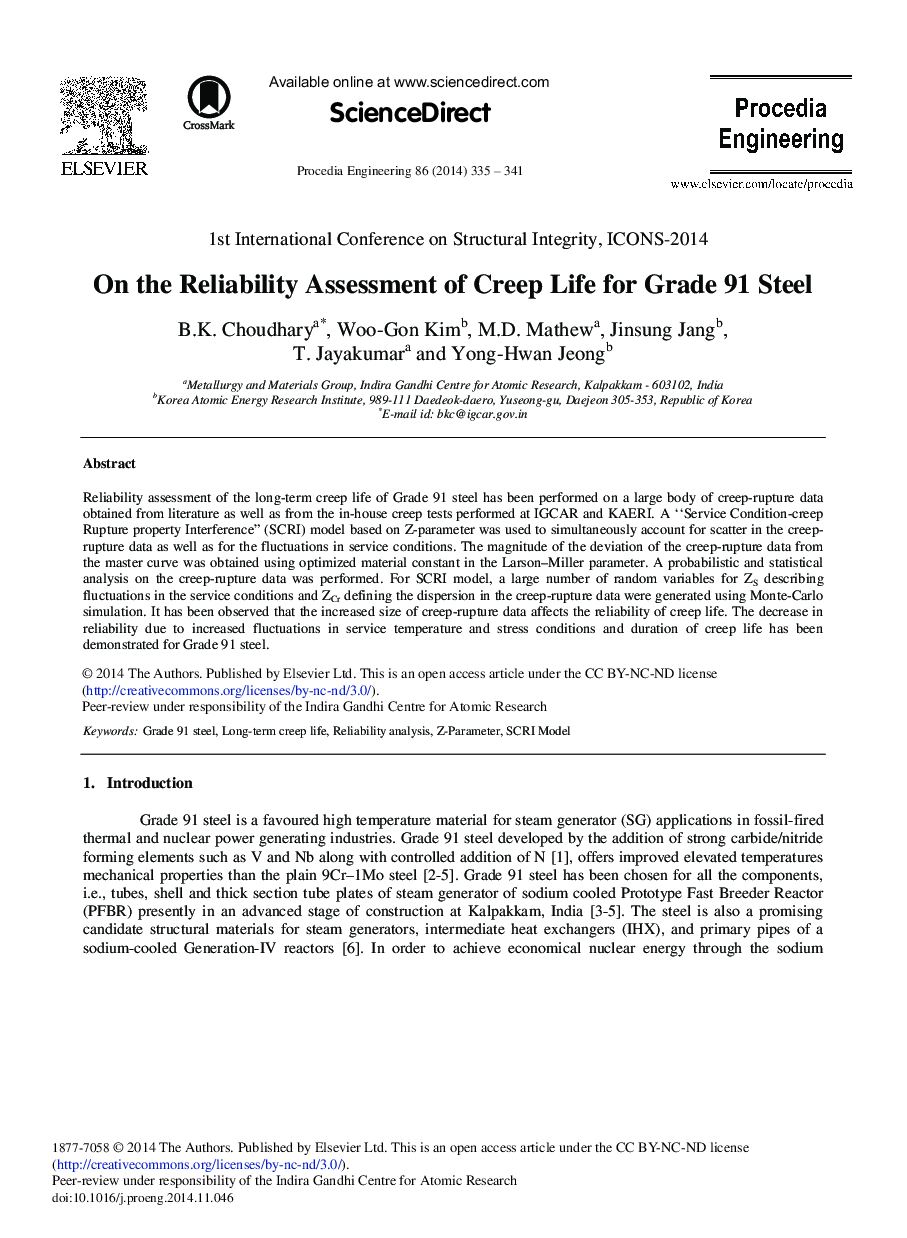| Article ID | Journal | Published Year | Pages | File Type |
|---|---|---|---|---|
| 857753 | Procedia Engineering | 2014 | 7 Pages |
Reliability assessment of the long-term creep life of Grade 91 steel has been performed on a large body of creep-rupture data obtained from literature as well as from the in-house creep tests performed at IGCAR and KAERI. A “Service Condition-creep Rupture property Interference” (SCRI) model based on Z-parameter was used to simultaneously account for scatter in the creep-rupture data as well as for the fluctuations in service conditions. The magnitude of the deviation of the creep-rupture data from the master curve was obtained using optimized material constant in the Larson–Miller parameter. A probabilistic and statistical analysis on the creep-rupture data was performed. For SCRI model, a large number of random variables for ZS describing fluctuations in the service conditions and ZCr defining the dispersion in the creep-rupture data were generated using Monte-Carlo simulation. It has been observed that the increased size of creep-rupture data affects the reliability of creep life. The decrease in reliability due to increased fluctuations in service temperature and stress conditions and duration of creep life has been demonstrated for Grade 91 steel.
